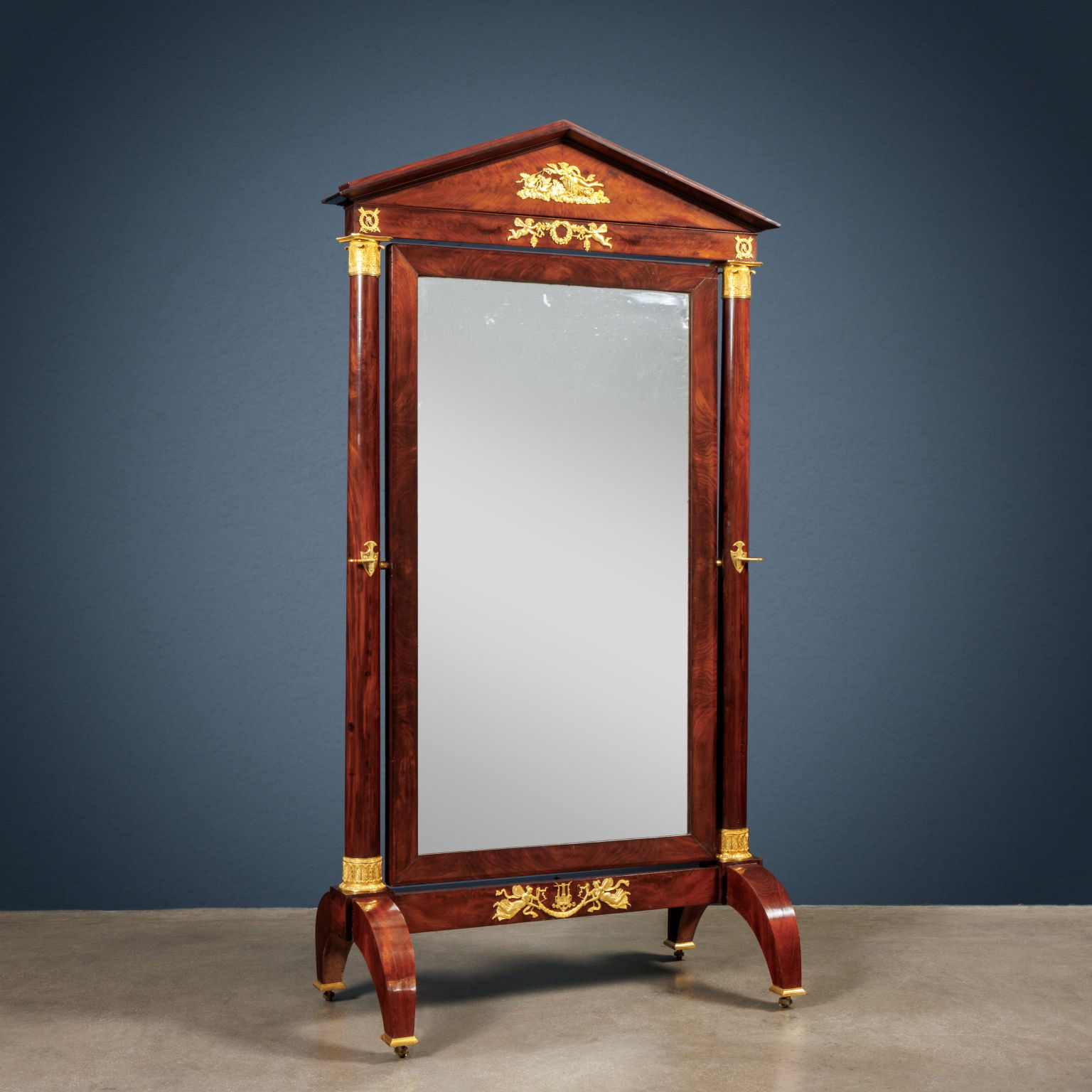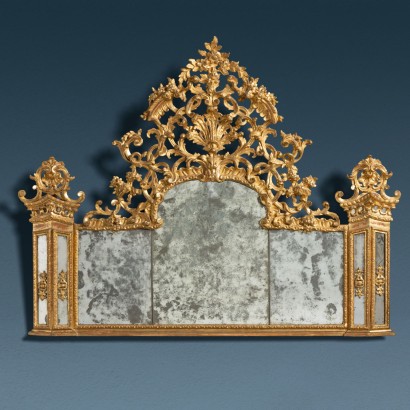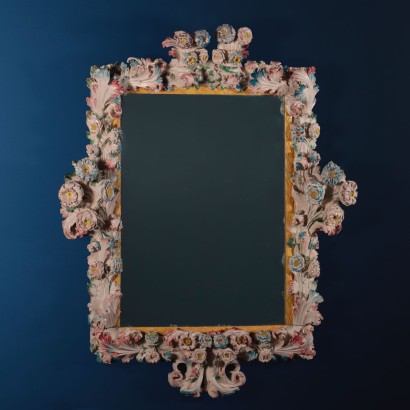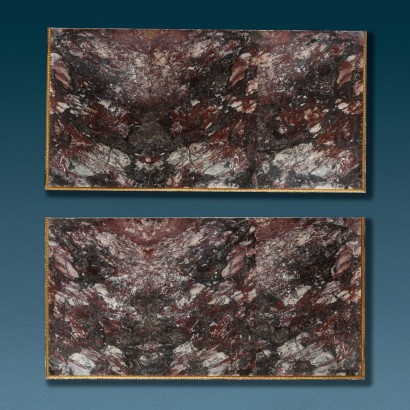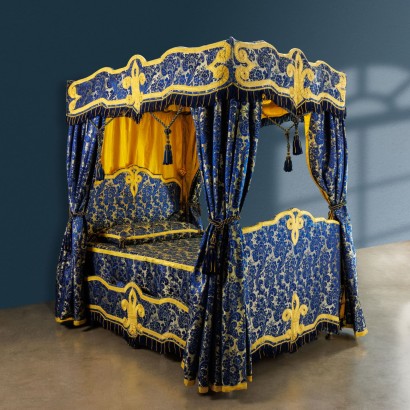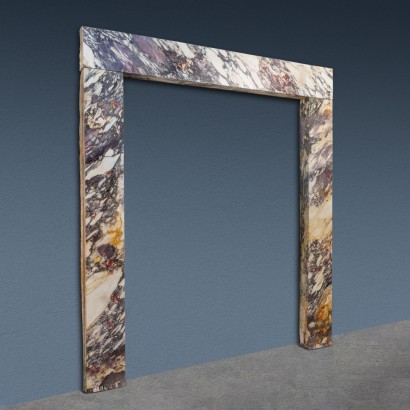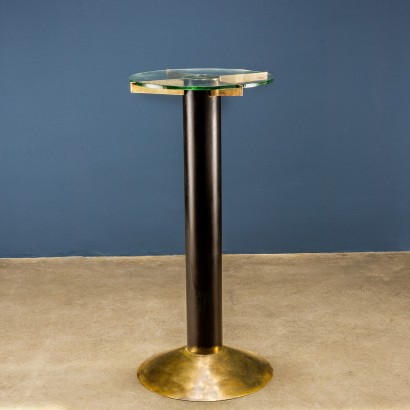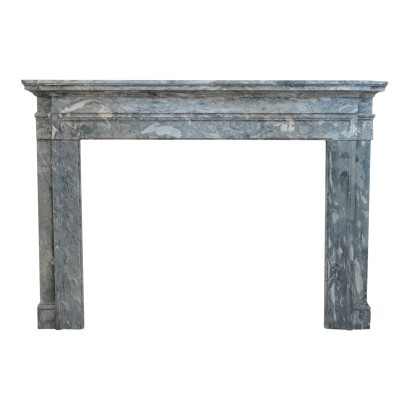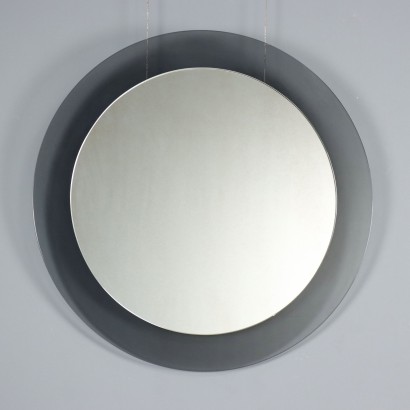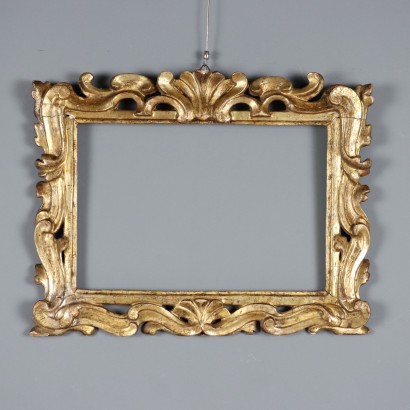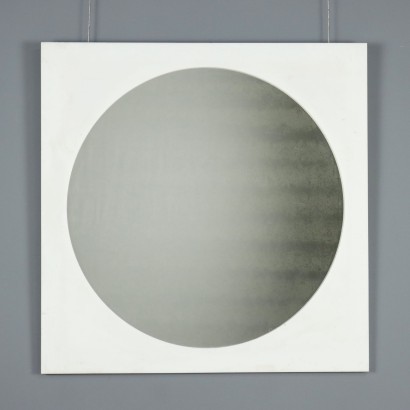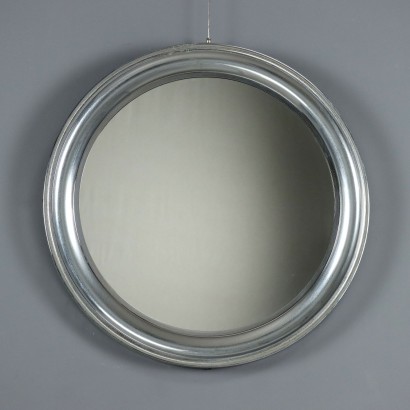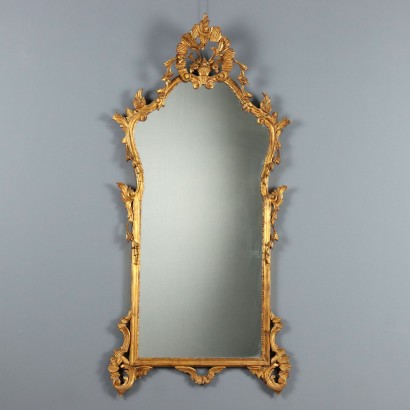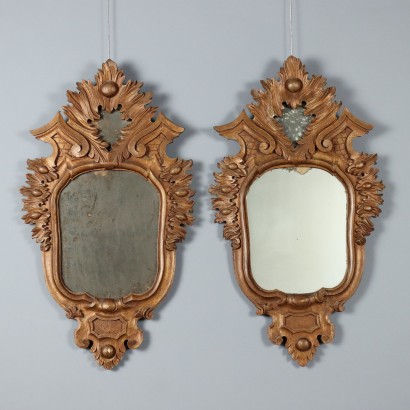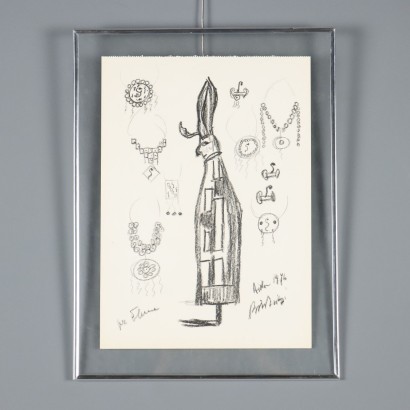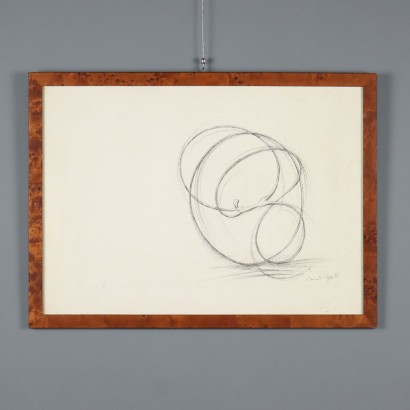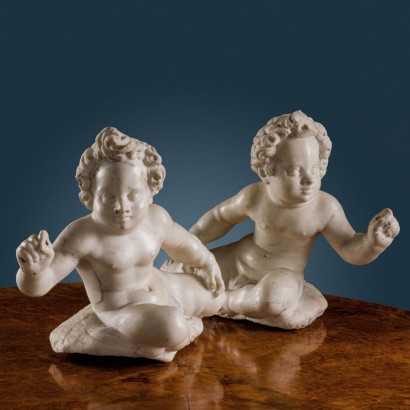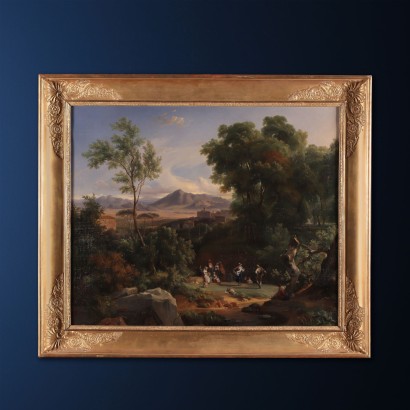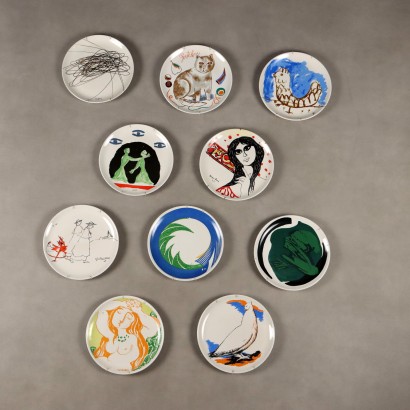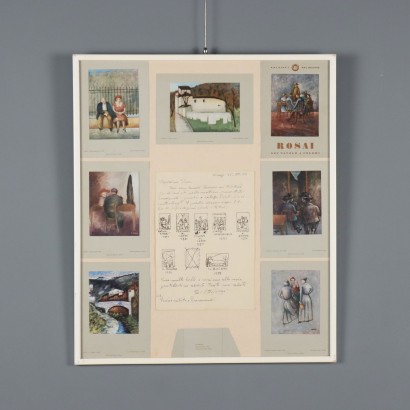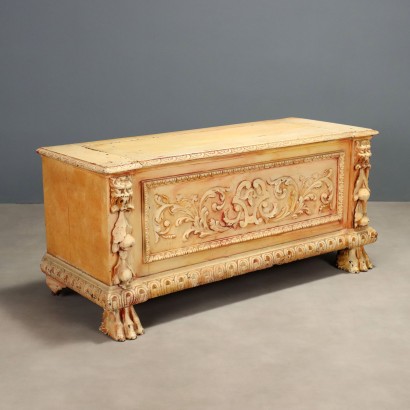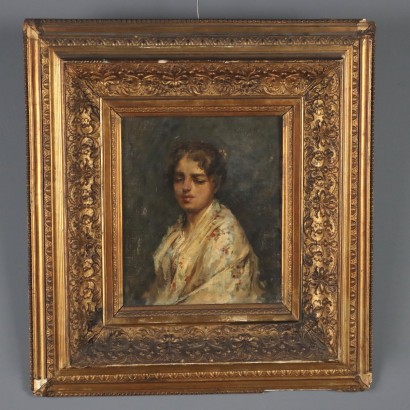Psyche Brothers Youf - Lucca, second half of the 1910s
Features
Lucca, second half of the 1910s
Style: Bourbon Restoration (1815-1830)
Age: 19th Century / 1801 - 1900
Origin: Toscana, Italy
Main essence: Mahogany
Description
Psyche veneered in mahogany feather, structure in oak, beech and poplar; it is decorated with gilded bronzes. The uprights are made up of columns to support the gable cymatium; the saber feet are equipped with wheels.
Product Condition:
Product in fair condition showing some signs of wear. We try to present the real state as fully as possible with photos. If some details are not clear from the photos, what is stated in the description applies.
Dimensions (cm):
Height: 210
Width: 110,5
Depth: 57
Additional Information
Notes historical bibliographic
The first confirmation that the cabinetmaker who created this furniture trained in Paris is provided by the essences used and their processing: in fact, oak was used for the structure, a very compact and durable wood, frequently used in translapine production together with beech , in this case combined with poplar, more common in Tuscan furniture. Furthermore, the choice of mahogany for the veneer is openly French. An exotic essence which France had access to in large quantities thanks to its vast colonial empire, it is instead more difficult to find in Italy and, at least in recent years, was mostly used in the creation of the most prestigious furniture. The high quality of our complement is also evident from the manufacturing method: the slabs are joined at 45° on the edges, so that there is no overlap or sign of connection, giving the impression that it is instead mahogany solid. Certainly the result of skilful manufacturing, the name that can be put forward for our psyche is that of the Youf brothers, and can be dated towards the end of the second decade of the 19th century. French cabinetmakers who declare their origins in the taste and structure of the furniture (not least the wheels placed under the feet and the construction method with which the uprights are made), but who are open to Italian influences in the use of certain essences . Recent studies have now ascertained how within the production of what until recently was thought to be a single figure, at least three personalities, plausibly brothers, were instead active. Among the main orders from the workshop was that of Maria Luisa di Borbone, established duchess of Lucca at the behest of the Congress of Vienna, who promoted the modernization of the Palazzo Ducale under the direction of the architect Lorenzo Nottolini. While numerous city workshops were involved in the construction site, many of the most valuable furnishings were requested from the Youfs, assisted for the bronze parts by the silversmith Andrea Valadier, belonging to the famous Roman family of artists. As evidence there is a payment from the court, dated to May 1821, intended for "Sebastiano Yeuf Cabinetmaker for the currency of a piece of furniture for the clock of His Excellency." (ASF, CBL, 116). The inventories reveal various pieces of furniture for the Bourbon, such as a coffee table, a personal desk and bed and, last but not least, a "mogogon grand secretary" (ML 1834, c. 91), signed inside one of the drawers " Jean Baptiste Youf”. The latter presents a rich bronze decorative apparatus, of great interest to us especially for the very high quality detail on the cymatium. At the base of the same is in fact depicted the Chariot of Venus, a subject also promptly reproduced on the tympanum that crowns our psyche. If it is apparently insidious to attribute an article of cabinet making on the basis of bronzes, rarely exclusive production as can be seen from this example, our psyche can reasonably be attributed to the Youf brothers, for the constructive and stylistic reasons cited above.Style: Bourbon Restoration (1815-1830)
Starting from the Congress of Vienna in 1815, the arts also expressed the return to monarchical order and the desire for order after the years of war.The stylistic characteristics are an evolution of the Empire style, but with simpler lines and stripped of the typical symbols of the Napoleonic period.
There is greater attention to the practicality of the furniture and domestic use.
Find out more with the insights of our blog and FineArt on the Restoration style:
The return to the past in the Restoration period
Gueridon Restaurazione
INSERT ADDITIONAL LINKS
Austrian taste for Baroque
The history of French furniture
Age: 19th Century / 1801 - 1900
19th Century / 1801 - 1900Main essence: Mahogany
It is one of the most precious and sought-after woods in cabinet making. It was discovered in Central America around 1600 and began to be imported to England in the 1700s. Much appreciated for its hardness and indestructibility, it became widespread following the blocking of walnut exports from France in 1720 and the consequent elimination of English import duties on mahogany from the colonies in America and India. The most valuable version comes from Cuba, but it became very expensive. At the end of the 18th century it began to be used also in France in Louis XVI, Directory and Empire furniture, its diffusion declined starting from when Napoleon, in 1810, forbade its import. It was generally used in the manufacture of elegant furniture, due to its characteristics and beautiful grain.Other customers have searched:
Se ti interessano specchi, specchiere, psiche, toilette, dai un'occhiata ai nostri approfondimenti sul blog e presentazioni su FineArt
Leggi di più
Una coppia di specchiere a cavallo tra barocco e barocchettoIl nuovo gusto nel Granducato di Toscana tra Rococò e Neoclassicismo in una specchiera intagliata
Una elegante specchiera intagliata e dorata, espressione dello stile Regency
Il fascino senza tempo della Toilette
Un reimpiego di qualità: da trumeau a specchiera
Caminiera Neoclassica, Firenze, ultimo quarto XVIII secolo
Specchiera Neoclassica, Firenze, fine XVIII secolo
Coppia di Specchiere Irlandesi, in Stile Giorgio III, seconda metà XIX secolo
Specchiera Cinese, Ultimo Quarto XVIII Secolo
Consolle Parietale con specchi
Consolle inglese, metà XIX secolo con specchi
Caminiera Impero, Lombardia, primo quarto XIX secolo
Psiche Impero, Francia, primo quarto XIX secolo
Cornice laccata, Veneto, ultimo quarto XVIII secolo
Specchiera Barocca, Bologna Inizio XVIII Secolo
Specchiera a Cassetta, Bologna Inizio XVIII Secolo
Cornice edicola, Venezia, XVI secolo
Sull'antiquariato in generale dai un'occhiata anche a:
Classic Monday: da un pezzo dei nostri magazzini alla storia dell'antiquariato
L'antiquariato dalla A alla Z: il Dizionario dell'Antiquariato
Il dizionario dell'antiquariato - Lastronatura
Il dizionario dell'antiquariato - Mascherone
Il dizionario dell'antiquariato - Natura morta
Il dizionario dell'antiquariato - Opificio
Il dizionario dell'antiquariato - Pastiglia
Il dizionario dell'antiquariato - Savonarola
Il dizionario dell'antiquariato - Rosone
Intaglio barocco con motivo a ricciolo
Product availability
The product can be seen at Cambiago
Immediate availability
Ready for delivery within 2 working days from ordering the product.

